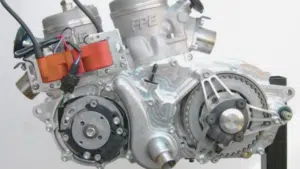Motorcycle helmets are durable, protective, and necessary for safe riding. And it’s no secret: motorcycle helmets can get dirty fast. Whether you ride through rain, sand, or dirt, your helmet is at risk of collecting a mess. The outside surface of your helmet, made of a polymer/fiberglass composite, can be easily scratched. In addition, the padding inside the helmet can become stained from sweat, oil, grease, and road grime. When this happens, your helmet won’t look as sharp as it used to, and it may even need to be replaced.
What happens inside the helmet is just as important as what goes on outside the helmet. Proper care and cleaning of motorcycle helmet pads are equally important as regular cleaning and care of the helmet itself. While helmets do need to be replaced every few years, not all helmets are removable, meaning their pads need to be replaced more often than other helmets.
If you’ve ever seen a rider with dirty helmet pads, it’s clear they haven’t been cleaned or cared for. Dirty helmet pads affect overall visibility, especially since helmet pads tend to collect dust and dirt easily. While cleaning a dirty helmet pad is not a small task, it can decrease your enjoyment of race riding, so it’s important to take the time to do it right.
What Are Helmet Pads?
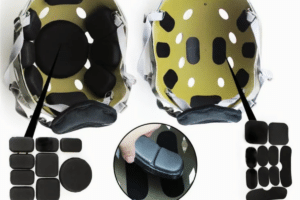
Helmet pads are padding that attach to the top of your hockey helmet to provide additional protection. While all helmets come with some padding, depending on the level of protection you need, the pads can be worn to provide additional cushioning.
Steps on How to Clean Helmet Pad After Race Riding?
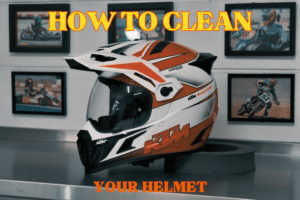
Why Is It Important to Wash Helmet Pads?
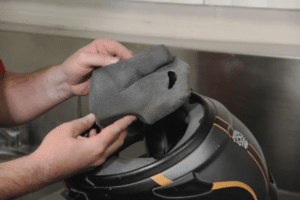
When Do You Need to Replace Your Motorcycle Helmet?
- Damage Helmet Pads
Damage to a helmet’s foam padding, for instance, can cause it to become less effective in protecting your face. Having the padding replaced or repaired can alleviate this issue.
- Worn-out or Old Helmet pads
Helmet pads are designed to protect your head in all sorts of circumstances. Whether protecting you from the wind or the curb, pads do a lot to mitigate the impacts that impact your head. Over time the pads tend to wear out, and there’s nothing you can do about that once they’ve reached that point. Unfortunately, pads don’t last forever, and they usually need to be replaced every 2-3 years, depending on the amount of use and how well you take care of them.
- Low-Quality Helmet Pad
The helmet pads are the rubbery pieces of your helmet that sit on top of your head. When you crash, the pads cushion the blow to your head and help protect your brain. And if the pads are made from low-quality materials, the results can be fatal.
Can Dirty Helmet Pad Affect Your Performance?
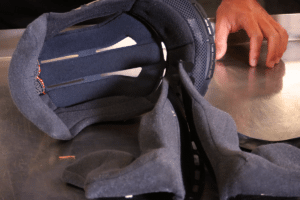
Can Cause Discomfort
Most motorcycle riders are aware that wearing a helmet is designed to reduce the chance of serious injury when race riding, but it also has another important function: comfort. A comfortable helmet can limit fatigue, reduce pain, and provide greater enjoyment in a competitive ride. A dirty and oily helmet padding can cause discomfort to the rider during the competition. Discomfort with helmet padding may result in poor performance.
Dirty Helmet Pads Can Affect Your Health
Dirty helmet pads can harbor bacteria, mold, fungus, or even worse brain-eating amoebas. These tiny organisms, known as protists, make it into the helmet through sweat, and, if left there, they can cause your helmet to deteriorate faster. Cysts can form that grow and burst, causing inflammation in your eyes and sinuses, and in rare situations, these cysts can rupture, causing an infection.
Conclusion
In conclusion, motorcycle helmet pads can be cleaned easily, but it’s best done regularly. Dust, road grime, and bugs can accelerate wear, eventually leading to eventual cracking or delamination. If your helmet is mounted properly, it should not move much at all during your ride. Over time, the helmet pad may deform, causing it to slip further. If your helmet is not mounted properly, it will move around, resulting in an abrasive, uncomfortable ride.


